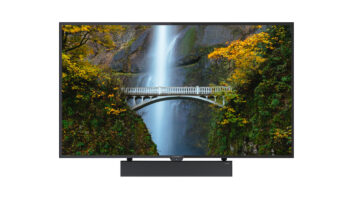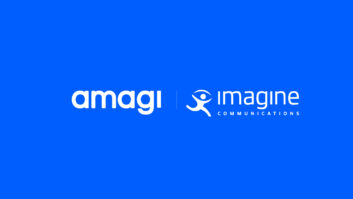El Segundo, Calif. – Although flat-panel television shipments are
expected to decline in the United States this year, the sophistication of
features used in the sets is on the rise, causing a rare, sharp increase in
pricing during the first four months of the year, according to an IHS
iSuppli “U.S. Price and Specifications TV
Tracker” report
.
High-end television features like Internet connectivity and LED
backlight technology have helped U.S. flat-panel TV prices climb 11.4 percent
since December 2011, IHS said.
In April, average pricing for U.S. flat-panel televisions,
including LCD and plasma sets, reached $1,248.
“Feature-rich TV models are responsible for the ongoing surge in
prices, especially as consumers clamor for capabilities such as Internet
connectivity and LED-backlighting technology,” stated Tom Morrod, IHS
television technology leader. “TV manufacturers and retailers are charging a premium
for these features, boosting their pricing and protecting their revenue. This
represents a shift in strategy among brands and retailers to hold the line on
pricing and encourage consumers to buy more expensive sets.”
Compared to the $1,119 average rate in December — the first
month that prices started rising again after a plunge in November — U.S.
flat-panel TV prices climbed to $78 at the end of April. This represents the
largest increase of any comparable four-month period during the past year, according
to the report.
A gradual rise in prices also occurred from April to July in
2011, but the total increase during that four-month period amounted to only
$33.
From November 2011 to February 2012, the four-month increase
measured slightly more than $63.
April’s average pricing was slightly up from the March level of
$1,232. A year ago in March 2011, pricing for U.S. flat-panel sets had tumbled
to a low of $1,087.
The current conditions in the U.S. flat-panel market represent a
major departure from 2011 and previous years, which were marked by aggressive
pricing competition, IHS said.
“Unlike the costly price wars waged by manufacturers last year
that left both suppliers and retailers bloodied, brands and sellers in 2012 are
working together to keep money flowing into the industry,” Morrod said. “The
industry is able to accomplish this by making consumers pay for features that
they want, and by excluding features that buyers are not willing to pay for.”
Such an approach has meant implementation of different pricing
strategies from brands and retailers as well controlled inventory into
distribution channels — a strategy that has also successfully preventing
prices from sliding this year, IHS believes.
In comparison to TVs that gained in pricing, models that featured
lower refresh rates or had no Internet connectivity saw their prices decline.
For instance, pricing slipped 6 percent in April for 40- and 42-inch sets made
by premium brands that used the older LCD technology of CCFL, had lower 60Hz
refresh rates and that lacked Internet capabilities.
For TVs that offered the desired advanced functionalities,
pricing during the same period ticked up — by 1 percent for the 30- to 39-inch
segment, and by 2 percent for both the 40- to 49-inch as well as for the
50-inch-and-larger categories.
Sellers have also been
working to “upsell” customers. Retailers are working to convince buyers to move
up to either a larger-sized TV or to one using LED-backlit panels, but the
price to upgrade carried different costs.
For instance, the extra cost to upgrade a premium-model 32-inch
TV without LED backlighting to another 32-inch model with an LED panel is 14
percent. However, the cost to upgrade to the next-bigger size of 40 or 42
inches — but one without LED backlighting — is 21 percent, IHS said.
The larger price premium for upgrading to a bigger TV size
indicates the market was aware that buyers were willing to shell out more money
to obtain larger-sized sets over a similar-sized TV model with LED
backlighting.
Just the same, the forced choice between one or the other option
is proving increasingly untenable for consumers, so sellers in the future are
expected to close the price gap between the two features. This means that
buyers in the future would pay the same price premium — say, 10 percent — to
either upgrade to an LED panel or to a bigger size. No longer will upgrading to
one option cost more than the other, as is the case today.
Among LCD 3DTVs, average prices in April rose 3 percent
sequentially to $2,492. Prices also rose 3 percent to $1,638 on average for TV
sets featuring the LCD rival technology of plasma, which continues to focus on
3D and larger-than-50-inch sizes.













